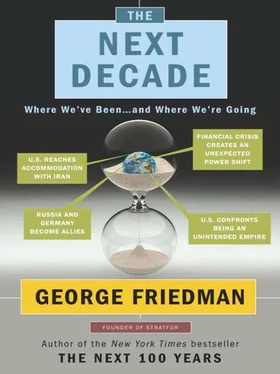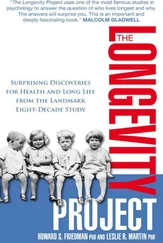The second problem in this rate of innovation, oddly enough, lies with the military. In the nineteenth century, the development of the steam engine and the development of the British navy (and its imperial reach) moved hand in hand. In the twentieth century, the United States was the engine of global technological development, and much of that innovation was funded and driven by military acquisitions, and almost all of that had some spin-off civilian application. The development of both aircraft and radios was heavily subsidized by the military and resulted in the subsequent birth of the airline industry and the broadcasting industry. The interstate highway system was first conceived of as a military project to facilitate the rapid movement of troops in case of Soviet attack or nuclear catastrophe. The microchip was developed for use in the small digital computers that guided both nuclear missiles and the rockets needed to put payloads in space. And of course the Internet, which entered public consciousness in the 1990s, began as a military communications project in the 1960s.
Wars are times of intense technological transformation, because societies invest—sometimes with extensive borrowing—when and where matters of life and death are at stake. The U.S.-jihadist war has driven certain developments in unmanned surveillance and attack aircraft as well as in database technology, but the profound transformations of World War II (radar, penicillin, the jet engine, nuclear weapons) and the Cold War (computers, the Internet, fiber optics, advanced materials) are lacking. The reason is that ultimately the conflicts in Afghanistan and Iraq are light-infantry wars that have required extrapolations of existing technologies but few game-changing innovations.
As funding for these wars dries up, research and development budgets will take the first hits. This is a normal cycle in American defense procurement, and growth will not resume until new threats are identified over the next three to four years. With few other countries working on breakthrough military technologies, this traditional driver of innovation will not begin bearing civilian fruit until the 2020s and beyond.
The sense of life or death that should drive technological innovation in the coming decade is the crisis in demographics and its associated costs. The decline in population that I wrote about in The Next 100 Years will begin to makes its appearance in a few places in this decade. However, its precursor—an aging populace—will become a ubiquitous fact of life. The workforce will contract, not only as a function of retirement but as increasing educational requirements keep people out of the market until their early or mid-twenties.
Compounding the economic effects of a graying population will be an increasing life expectancy coupled with an attendant increase in the incidence of degenerative diseases. As more people live longer, Alzheimer’s disease, Parkinson’s disease, debilitating heart disease, cancer, and diabetes will become an overwhelming burden on the economy as more and more people require care, including care that involves highly sophisticated technology.
Fortunately, the one area of research that is amply funded is medical research. Political coalitions make federal funding sufficiently robust to move from basic research to technological application by the pharmaceutical and biotech industries. Still, the possibility of imbalance remains. The mapping of the genome has not provided rapid cures for degenerative diseases, nor has anything else, so over the next ten years the focus will be on palliative measures.
Providing such care could entail labor costs that will have a substantial drag on the economy. One alternative is robotics, but the development of effective robotics depends on scientific breakthroughs in two key areas that have not evolved in a long time: microprocessors and batteries. Robots that can provide basic care for the elderly will require tremendous amounts of computing power as well as enhanced mobility, yet the silicon chip is reaching the limits of miniaturization. Meanwhile, the basic programs needed to guide a robot, process its sensory inputs, and assign tasks can’t be supported on current computer platforms. There are a number of potential solutions, from biological materials to quantum computing, but work in these areas has not moved much beyond basic research.
Two other converging technological strands will get bogged down in the next decade. The first is the revolution in communications that began in the nineteenth century. This revolution derived from a deepening understanding of the electromagnetic spectrum, a scientific development driven in part by the rise of global empires and markets. The telegraph provided near-instantaneous communications across great distances, provided that the necessary infrastructure—telegraph lines—was in place. Analog voice communications in the form of the telephone followed, after which infrastructure-free communications developed in the form of wireless radio. This innovation subsequently divided into voice and video (television), which had a profound effect on the way the world worked. These media created new political and economic relations, allowing both two-way communications and centralized broadcast communications, a “one to many” medium that carried implicitly great power for whoever controlled the system. But the hegemony of centralized, one-to-many broadcasting has come to an end, overtaken by the expanded possibilities of the digital age. The coming decade marks the end of a sixty-year period of growth and innovation in even this most advanced and disruptive digital technology.
The digital age began with a revolution in data processing required by the tremendous challenges of personnel management during World War II. Data on individual soldiers was entered as nonelectronic binary code on computer punch cards for sorting and identification. After the war, the Defense Department pressed the transformation of this primitive form of computing into electronic systems, creating a demand for massive mainframes built around vacuum tubes. These mainframes entered the civilian market largely through the IBM sales force, serving businesses in everything from billing to payrolls.
After development of the transistor and the silicon-based chip, which allowed for a reduction in the size and cost of computers, innovation moved to the West Coast and focused on the personal computer. Whereas mainframes were concerned primarily with the manipulation and analysis of data, the personal computer was primarily used to create electronic analogs of things that already existed—typewriters, spreadsheets, games, and so on. This in turn evolved into handheld computing devices and computer chips embedded in a range of appliances.
In the 1990s, the two technological tributaries, communications and data, merged into a single stream, with information in electronic binary form that could be transmitted by way of existing telephone circuits. The Internet, which the Defense Department had developed to transmit data between mainframe computers, quickly adapted to the personal computer and the transmission of data over telephone lines using modems. The next innovation was fiber optics for transmitting large amounts of binary data as well as extremely large graphics files.
With the advent of graphics and data permanently displayed on websites, the transformation was complete. The world of controlled, one-to-many broadcasting of information had evolved into an infinitely diffuse system of “many to many” narrowcasting, and the formally imposed sense of reality provided by twentieth-century news and communications technology became a cacophony of realities.
The personal computer had become not only a tool for carrying out a series of traditional functions more efficiently but also a communications device. In this it became a replacement for conventional mail and telephone communications as well as a research tool. The Internet became a system that combined information with sales and marketing, from data on astronomy to the latest collectibles on eBay. The Web became the public square and marketplace, tying mass society together and fragmenting it at the same time.
Читать дальше












